Jon Sarkin died on Friday, July 19. Like many others, I was stunned and felt a profound loss. I interviewed him a few weeks before that and wrote this story, which he told me he liked a lot.
Unlike the writers of the heartfelt tributes I’ve seen, including those by the band Guster and Greg Cook, I knew Jon for a very brief time; just a snapshot of a full life that ended too soon.
I’d admired him for making art—lots of it, possibly 50,000 pieces—in his distinctive style. I was drawn to his drawings that were densely filled with found phrases, repeated words, and names of musicians and artists. Jon’s pieces had a unique quality in contrast to other kinds of good art that conforms to an established style.
When I approached Jon for an interview in June, he was super enthusiastic about it. While he had told his story many times before, he approached our interview as if he was describing his work for the first time.
Jon made it more of a two-way conversation than a one-directional interview, posing challenging questions back to me. During our two-hour interview, nothing else competed with Jon’s attention, which was fixed on answering my questions and posing reciprocal ones. I was grateful to Jon for being so receptive and engaging.
Jon was a prolific artist, but I think one of his superpowers was connecting with people. Good Morning Gloucester’s Joey Ciaramitaro, a longtime friend of Jon’s, told the Gloucester Times, “Gloucester lost a beloved soul.”
To celebrate Jon Sarkin and his work, I’m re-sharing here what I learned from him about art and the artistic life.
Don’t listen to your inner editor.
Jon explained that he didn’t have an inner voice putting the brakes on creative expression:
“You know how if you rent a truck, no matter how hard you push on the gas, it's going to stay at 50 miles per hour? I used to have that ‘governor’ as it's called, but I don't have that anymore.
I come up with these ideas, and I don't have the censor that says, ‘That's not a good idea.’ It's a free-flowing, stream-of-consciousness.”
Use whatever art materials are available.
For Jon, that meant frequent visits to Mystery Train Records for their album discards. He would tear open the album covers and draw and paint on the unfinished sides. I think Jon liked the low cost and squareness of his adapted media, in contrast to starting with a white canvas.
Create an artmaking environment that works for you.
One painter I know–my Staff Photographer–chooses to set up at the kitchen table to paint. I’ve visited tidy studios adorned with oriental rugs, still life tableaus, and gold-framed oil paintings, with Beethoven sonatas as the soundtrack. And there are plenty of plein air painters in Cape Ann who enjoy widely varying venues.
Jon’s Fish City Studios on Main Street in Gloucester, MA, featured a mixed soundtrack of gritty rock and roll and sounds from the nearby working waterfront. What I will call his art cave was outfitted with paint-splattered chairs, teetering stacks of vinyl record albums, cardboard boxes filled with Sharpies and paints, and plenty of “inventory” casually attached to the walls and ceiling as well as the floor.
Try different mediums and forms of expression.
While much of Jon’s work was rendered with Sharpies on the reverse side of album covers, he also produced large mixed media pieces, portraits, murals, rug designs, and a collaboration with photographer Paul Cary Goldberg. He designed a Guster album cover and his art (and him) are in the band’s video, Do You Love Me. Moreover, he delivered art talks at galleries and his own studio, and this heartfelt and raw live performance.
Welcome people into your art studio.
You never know who will walk in the door, what story or choice phrase you will hear that will make its way into your art, or what your neighbors will gift you. Jon described the delicious meal the Short and Main restaurant folks shared with him when he was in the studio one late night. Another time, artist Erin Luman gave him a painting he really liked. I’m sure there are many more similar stories that I didn’t get to hear.
Accept that growth can be uncomfortable.
Here’s what Jon said:
“As long as I'm in the space of asking, ‘What the hell am I doing?’ that's good. If I'm doing something I did already, that's bad. I don't want to repeat myself.
For me, that feeling of growth is very uncomfortable. Think about a baby getting born. That doesn't look like a whole lot of fun for the baby.
I don't seek it out. It seeks me out. It's really good at finding me. If discomfort is at the door, I don't say, ‘Go away.’ I say, ‘Come on in. We'll make a deal.’”
Put in the time and make lots of art.
Jon told me that he worked in his studio every day. By some estimates, he applied Sharpie, pastel, paintbrush, or spray paint to various surfaces to produce at least 50,000 pieces of art. Given that he had been making art prolifically since 1989, he likely had logged 70,000 hours or more of artmaking.
Find people to help you with the business side of art.
Jon sought out Mark Henderson, who helped him get gallery representation in London, established his far-reaching social media presence, and secured gallery shows, among other feats. Mark and friends of the studio are spearheading efforts to catalog and archive Jon’s work, place it in museum collections, and sell it to benefit Jon’s family.
You can learn about the archiving project and get updates about the studio at the Jon Sarkin Memorial Archives Patreon page. You can also buy art at jonsarkin.com or email art@jonsarkin.com to make an appointment to visit the studio.
Jon wanted more people to see his art. He was not chiefly seeking fame, even though he appreciated attention. Nor was it about selling more art, even though he appreciated income. It was principally about getting his ideas and his drawings out into the world.
When we talked a couple weeks ago, I suggested he was a healer in his previous profession as a chiropractor, and that he was filling a similar role as an artist. He nodded in agreement, smiled, and said, “As a chiropractor, it was one to one, and now it’s one to many.”
Appreciate random found art.
I returned to Jon’s studio a week after our interview so that he could review a draft of his story. During this second and last visit with Jon, he described a recent family gathering and the delicious food his daughter made. It was heartwarming.
Then, he said he had something he wanted to give me, which he discovered inside a record jacket:
He said he loved the sentiment of: “Have fun. Most important thing today.” I asked him: “Don’t you want to keep it and put it into one of your collages?” He said, “No, you can have it.”
Jon said he had a lot of fun doing the interview with me. That makes me both happy and sad in view of his passing. He gifted me a small piece of art as a thank you for my article. Many others already have one of his pieces or will acquire one. They will be fun to look at and will evoke memories of a thoughtful and uniquely talented man.
If you want to offer support and get studio updates…
Visit the Jon Sarkin Memorial Archives Patreon page, set up by close friends of Jon’s studio—in consultation with Jon’s family—to honor Jon’s legacy and ensure that his art reaches a broader audience. There are many tiers of memberships, all of which are intended to:
Preserve Jon’s legacy by systematically archiving his work and preparing it for sale and placement in museums and important collections; 30% of proceeds from memberships will support this effort.
Support Jon’s family. Jon's art was the primary source of his family's income; 70% of membership funds will go directly to his family.

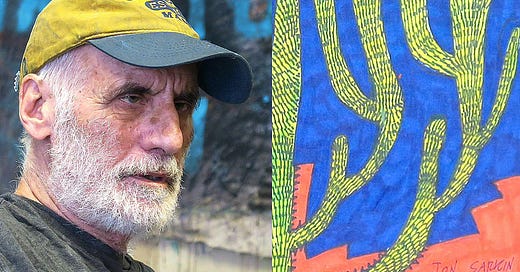



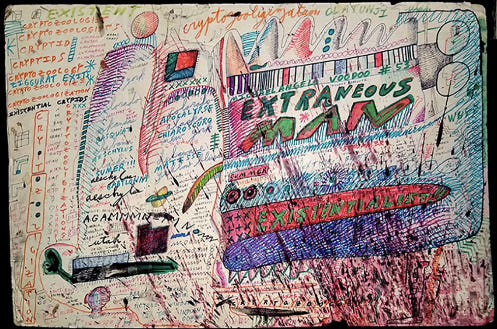

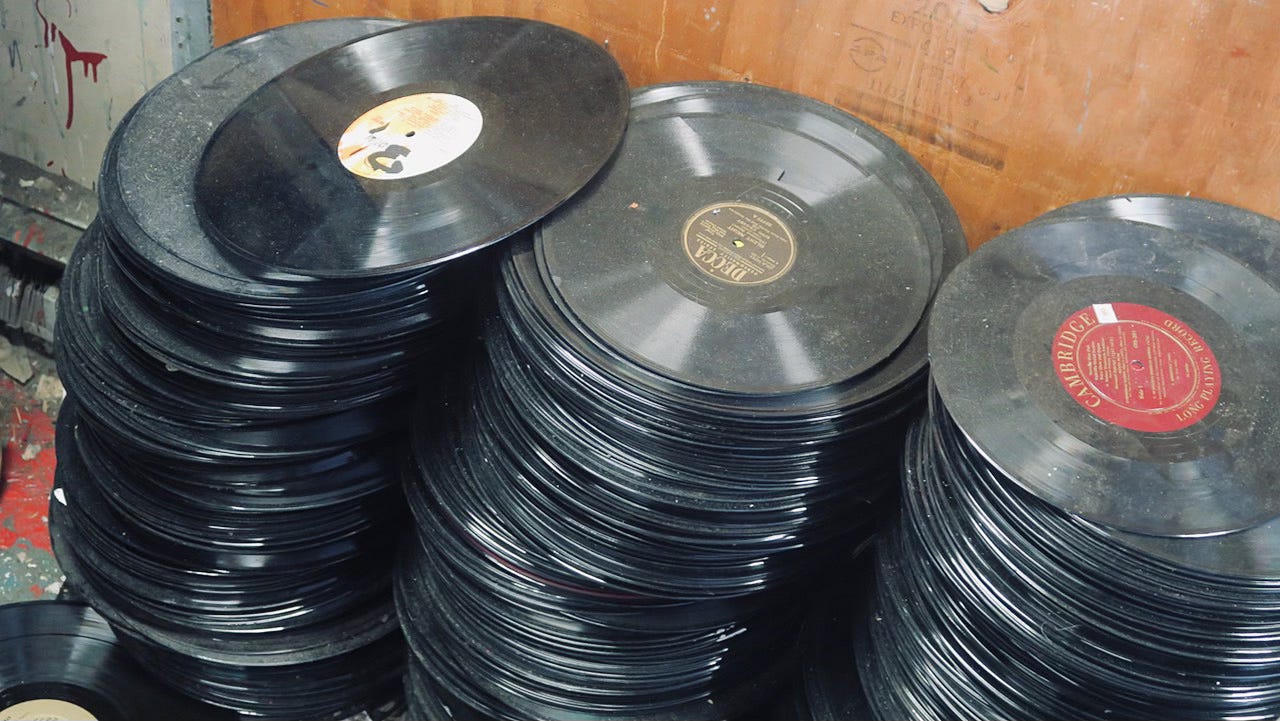

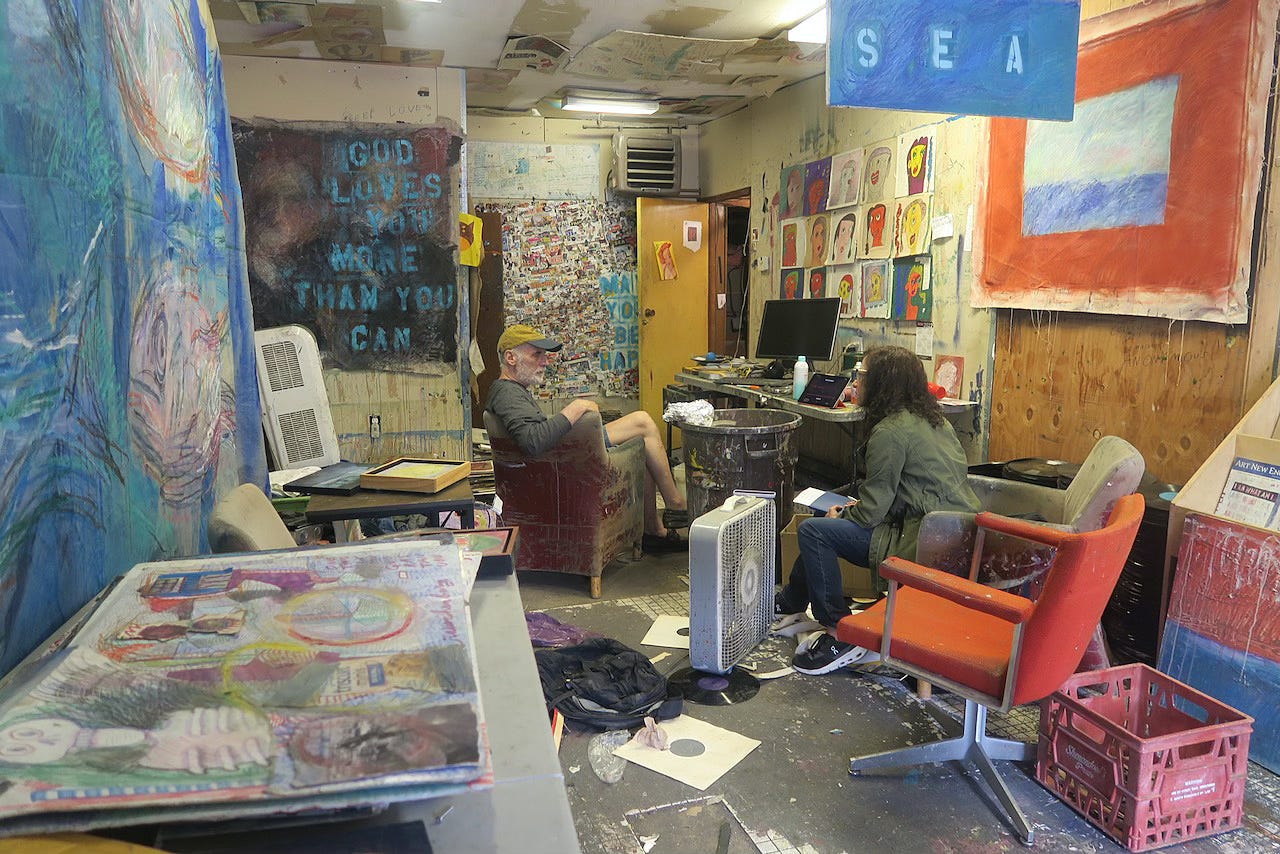


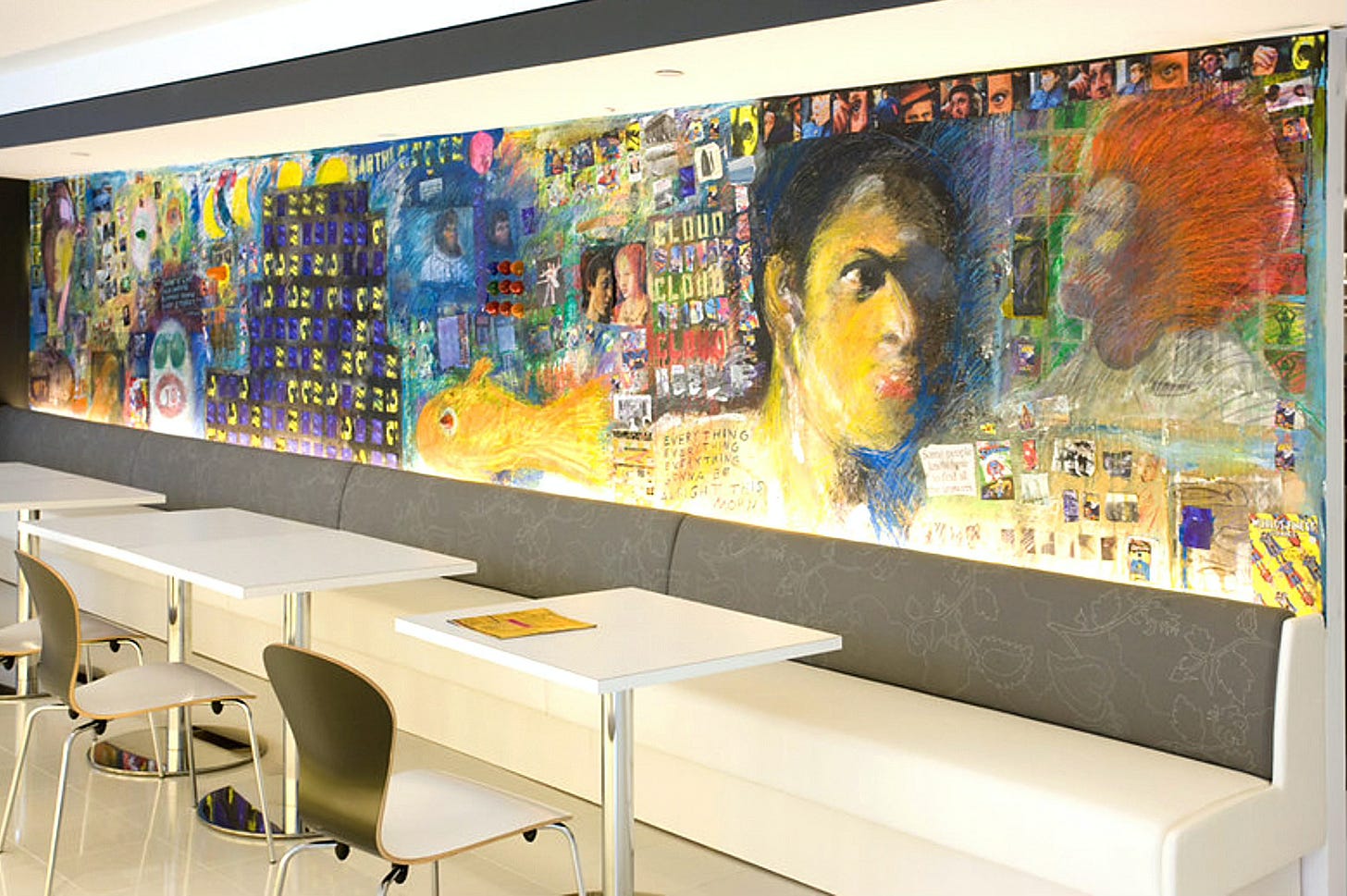


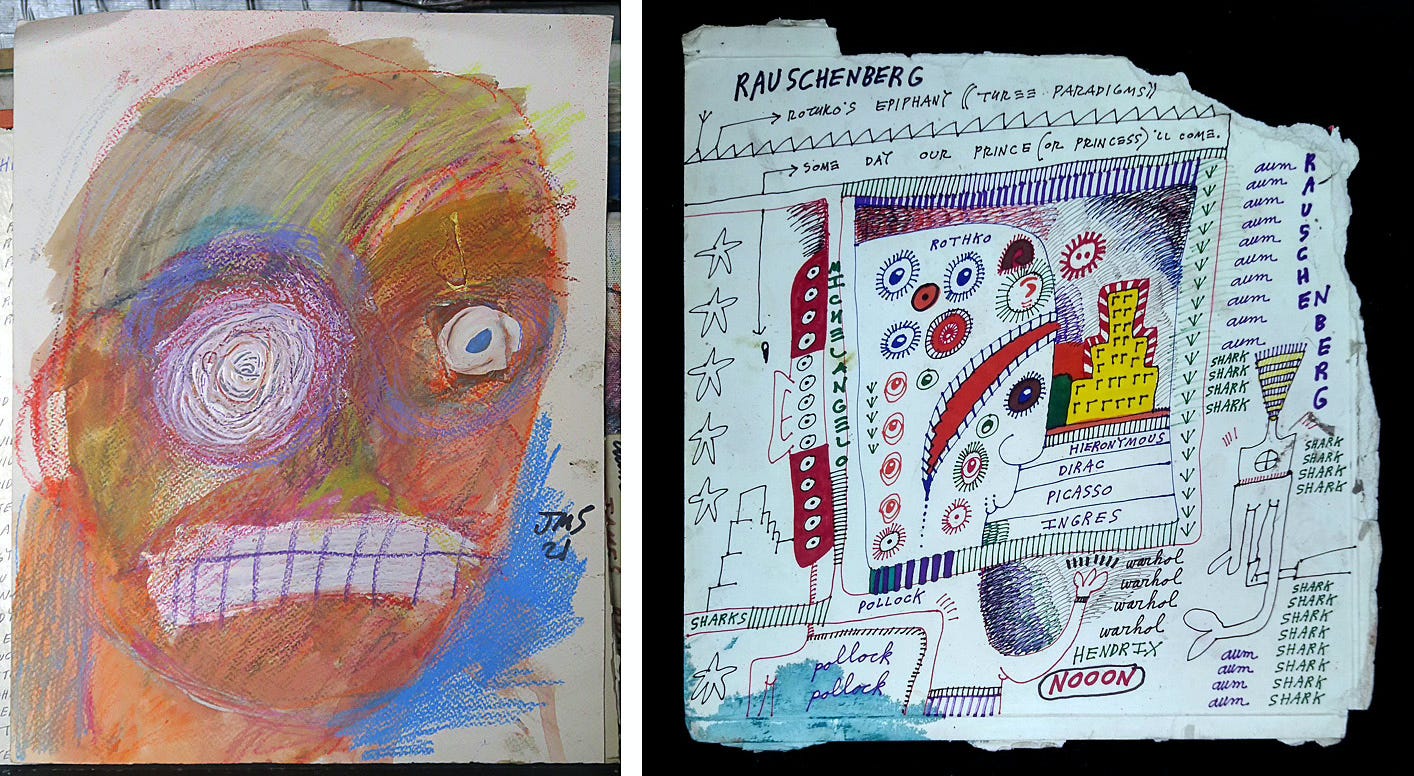

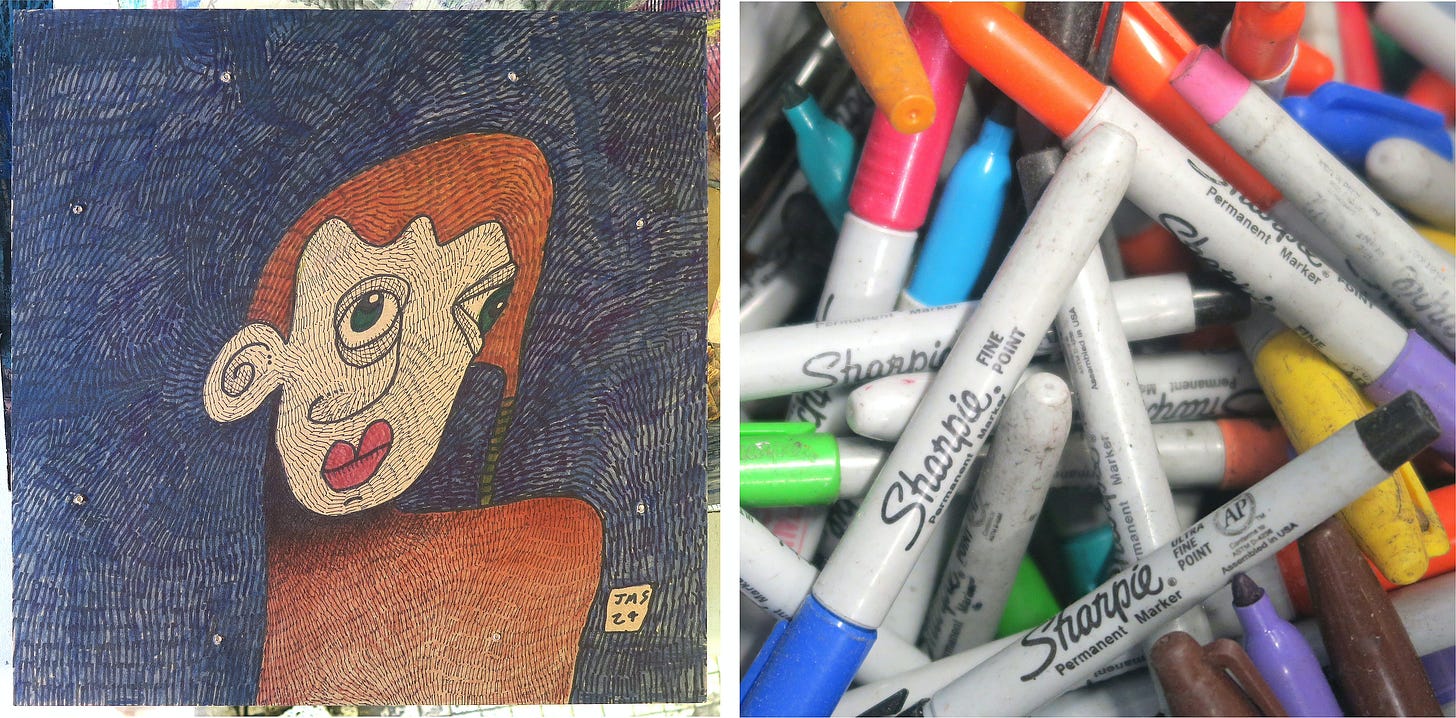

I was visiting with Jon a last week. He inspired me to set up my own art studio/gallery in Gloucester. I was his cleaning person, whenever the place was too out of control. He gave me a wonderful batman drawing to add to my collection. I will really miss him.
A lovely tribute to a uniquely talented artist. He will be well remembered.